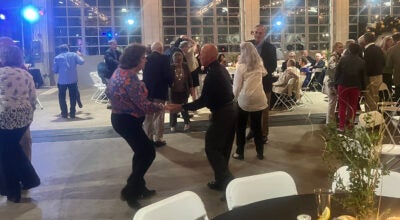Salisbury’s nuisance code enforcer has answers to your questions
Published 12:00 am Wednesday, December 2, 2009
By Mark Wineka
mwineka@salisburypost.com
Jeff Benfield has one of the toughest jobs in the city.
As Salisbury’s only nuisance code enforcement officer, Benfield has to keep after property owners about abandoned cars, overgrown lots, junked appliances, upholstered furniture on porches and more.
Last year, Benfield investigated 1,961 possible nuisances, or an average of more than five a day.
“Though I’m not from here, I think of Salisbury as my town now,” Benfield said. “I’d like to see us all work together and keep it beautiful, because it is a pretty city.”
Benfield devotes much of his spring and summer to vegetation and addressing overgrown properties.
One question that often comes up is, who’s responsible for the strip of grass between the street and sidewalk?
Benfield says that no matter whom that right of way belongs to ó the state, utility companies or the city ó it’s the adjoining property owner’s responsibility to keep it mowed and/or maintained.
The Salisbury City Council spelled it out in the city nuisance code years ago, he said.
Under the heading, “Responsibility for sidewalk, curb and grass strip maintenance,” the nuisance code says the following:
“It shall be the responsibility of the owner or occupant of a property to ensure that the sidewalk and curb abutting their property are kept clear of trash, debris and vegetation of any kind. The grass strip between the sidewalk and curb is to be kept mowed to a height not to exceed 7 inches.”
Benfield said the city sometimes will mow a few grass strips next to city sidewalks as part of getting ready for the annual OctoberTour. “We’ve done it, but it’s not our responsibility,” he said.
Getting property owners to keep the grass strip next to the street maintained has been a recurring problem citywide. “This thing is getting kind of bad,” Benfield said.
When Benfield cites a property owner for not maintaining the strip, he gives 15 days for the problem to be addressed. If the strip is still overgrown after the 15 days, the city mows the strip, and Benfield sends the owner a bill.
Benfield noted the nuisance ordinance also makes it unlawful for a property owner to allow the accumulation of leaves, grass clippings or other debris from his premises on a public street or sidewalk, “which would prohibit or interfere with the free passage of pedestrians or vehicles.”
Yard waste and debris should be placed “along the curbline” of the public right of way for pickups by the city, according to the ordinance.
Benfield routinely deals with abandoned appliances and upholstered furniture (furniture meant for indoor use) being left in yards or on porches.
They are considered public nuisances and can be cited by Benfield.
Benfield said the city will pick up furniture no longer wanted if it is left at the curb. The city also will haul away used appliances during its spring and fall “Spruce-Up” weeks.
The next Spruce-Up Week is Oct. 13-17. Items to be discarded should be placed at the curb the same day as a property owner’s regular garbage pickup.
Junked and abandoned vehicles are another item usually on Benfield’s checklist.
Under the city ordinance, all vehicles on a property should be insured and have a valid state license tag. Otherwise, they can be considered junked cars. The owner has 15 days to insure and tag them or have them removed.
Benfield said he doesn’t push the issue of whether the cars are inspected or not.
Benfield said it’s a possibility that residents in newly annexed areas are not aware of some of the city guidelines connected to nuisances.
“I don’t know how much word got out to them, really,” he said.
Benfield responds both to complaints and what he sees or documents in his own trips around the city.
Property owners with questions should contact him at 704-638-5262.




